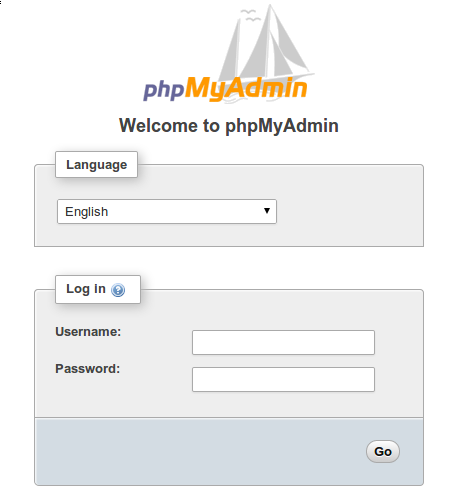
In this tutorial, we will show you how to install phpMyAdmin on Nginx. phpMyAdmin stands as one of the most popular web-based database administration tools for MySQL and MariaDB databases. When combined with Nginx’s high-performance web server capabilities, it creates a powerful platform for database management. This comprehensive guide walks you through the complete installation and configuration process of phpMyAdmin on Nginx, ensuring both functionality and security.
Unlike Apache installations, setting up phpMyAdmin with Nginx requires manual configuration steps that provide greater control over your server environment. This tutorial covers everything from initial system preparation through advanced security hardening, making it suitable for both beginners and experienced system administrators managing Ubuntu servers.
Prerequisites and System Requirements
Server Requirements
Before beginning the phpMyAdmin installation process, ensure your Ubuntu server meets the following minimum requirements:
- Ubuntu 18.04, 20.04, or 22.04 LTS server with root or sudo access
- Minimum 1GB RAM (2GB recommended for larger databases)
- At least 10GB available disk space
- Active internet connection for downloading packages
- Basic firewall configuration knowledge
Required Knowledge
This installation guide assumes familiarity with Linux command-line operations, basic web server concepts, and fundamental MySQL or MariaDB database administration. You should be comfortable navigating terminal environments and editing configuration files using text editors like nano or vim.
Step 1: System Preparation and Updates
Updating the System
Start by updating your Ubuntu system to ensure all packages are current and security patches are applied:
sudo apt update && sudo apt upgrade -yThis command refreshes the package index and upgrades all installed packages to their latest versions. System updates prevent compatibility issues and security vulnerabilities that could affect your phpMyAdmin installation.
Installing Essential Packages
Install necessary utility packages that will be required throughout the installation process:
sudo apt install wget curl nano zip unzip openssl -yThese tools provide essential functionality for downloading files, text editing, and security operations needed for phpMyAdmin configuration.
Step 2: Installing and Configuring MySQL/MariaDB
Database Server Installation
Install either MySQL or MariaDB server to provide the database backend for phpMyAdmin:
sudo apt install mysql-server -yFor MariaDB users, substitute with:
sudo apt install mariadb-server -yAfter installation, secure your database server with the security script:
sudo mysql_secure_installationCreating Database Users
Rather than using the root account, create a dedicated administrative user for phpMyAdmin access. Connect to your MySQL server:
sudo mysqlCreate a new administrative user with appropriate privileges:
CREATE USER 'phpmyadmin_user'@'localhost' IDENTIFIED BY 'secure_password';
GRANT ALL PRIVILEGES ON *.* TO 'phpmyadmin_user'@'localhost' WITH GRANT OPTION;
FLUSH PRIVILEGES;
EXIT;Replace ‘secure_password’ with a strong password following security best practices.
Step 3: Installing and Configuring Nginx Web Server
Nginx Installation
Install Nginx web server using the APT package manager:
sudo apt install nginx -yStart and enable the Nginx service to ensure it runs automatically at boot:
sudo systemctl start nginx
sudo systemctl enable nginxVerify the installation by checking the service status:
sudo systemctl status nginxBasic Nginx Configuration
Nginx stores its configuration files in /etc/nginx/. The main configuration file is located at /etc/nginx/nginx.conf, while site-specific configurations are stored in /etc/nginx/sites-available/.
Test your Nginx installation by visiting your server’s IP address in a web browser. You should see the default Nginx welcome page.
Firewall Configuration
Configure your firewall to allow HTTP and HTTPS traffic:
sudo ufw allow 'Nginx Full'
sudo ufw enableThis opens ports 80 (HTTP) and 443 (HTTPS) while maintaining security for other services.
Step 4: Installing PHP and Required Extensions
PHP Installation
Install PHP with FastCGI Process Manager (FPM) and MySQL extensions:
sudo add-apt-repository ppa:ondrej/php -y
sudo apt update
sudo apt install php8.3-fpm php8.3-mysql php8.3-mbstring php8.3-zip php8.3-gd php8.3-json php8.3-curl -yPHP Configuration for phpMyAdmin
Edit the PHP configuration file to optimize settings for phpMyAdmin:
sudo nano /etc/php/8.3/fpm/php.iniModify the following settings:
max_execution_time = 300
memory_limit = 256M
post_max_size = 64M
upload_max_filesize = 64M
max_input_vars = 3000Restart PHP-FPM to apply changes:
sudo systemctl restart php8.3-fpmStep 5: Installing phpMyAdmin
Manual Installation Process
Download the latest phpMyAdmin version from the official website:
cd /tmp
wget -c https://files.phpmyadmin.net/phpMyAdmin/5.2.1/phpMyAdmin-5.2.1-english.tar.gzExtract the downloaded archive:
tar -xzvf phpMyAdmin-5.2.1-english.tar.gzMove the extracted directory to the appropriate location:
sudo mv phpMyAdmin-5.2.1-english /usr/share/phpmyadminSet proper ownership and permissions:
sudo chown -R www-data:www-data /usr/share/phpmyadmin
sudo chmod -R 755 /usr/share/phpmyadminAlternative APT Installation
For users preferring package management, install phpMyAdmin via APT:
sudo apt install phpmyadmin -yDuring installation, select “None” when prompted for web server configuration, as we’ll configure Nginx manually.
Step 6: Configuring Nginx for phpMyAdmin
Creating Symbolic Links
Create a symbolic link from phpMyAdmin’s installation directory to Nginx’s document root:
sudo ln -s /usr/share/phpmyadmin /var/www/html/phpmyadminThis allows Nginx to serve phpMyAdmin files from the standard web directory structure.
Nginx Virtual Host Configuration
Edit the default Nginx configuration file:
sudo nano /etc/nginx/sites-available/defaultModify the index directive to include PHP files:
index index.php index.html index.htm index.nginx-debian.html;Add a location block for phpMyAdmin within the server block:
location /phpmyadmin {
root /usr/share/;
index index.php index.html index.htm;
location ~ \.php$ {
try_files $uri =404;
fastcgi_split_path_info ^(.+\.php)(/.+)$;
fastcgi_pass unix:/var/run/php/php8.3-fpm.sock;
fastcgi_index index.php;
fastcgi_param SCRIPT_FILENAME $document_root$fastcgi_script_name;
include fastcgi_params;
}
}PHP-FPM Integration
Ensure PHP processing is properly configured by adding or modifying the PHP location block:
location ~ \.php$ {
include snippets/fastcgi-php.conf;
fastcgi_pass unix:/var/run/php/php8.3-fpm.sock;
}Test the Nginx configuration syntax:
sudo nginx -tReload Nginx to apply changes:
sudo systemctl reload nginxStep 7: Security Implementation
Changing Default URL Path
Enhance security by changing the default phpMyAdmin URL path. Rename the symbolic link to something less obvious:
sudo rm /var/www/html/phpmyadmin
sudo ln -s /usr/share/phpmyadmin /var/www/html/hiddenlinkUpdate your Nginx configuration to reflect the new path:
location ^~ /hiddenlink {
root /usr/share/;
index index.php index.html index.htm;
# ... rest of configuration
}HTTP Authentication
Implement HTTP basic authentication for an additional security layer. Create a password file:
openssl passwdEnter your desired password when prompted. Copy the encrypted output and create the authentication file:
sudo nano /etc/nginx/pma_passAdd your username and encrypted password:
admin:encrypted_password_hereModify your Nginx location block to include authentication directives:
location ^~ /hiddenlink {
auth_basic "Admin Login";
auth_basic_user_file /etc/nginx/pma_pass;
root /usr/share/;
# ... rest of configuration
}IP-Based Access Control
Restrict access to specific IP addresses for enhanced security:
location ^~ /hiddenlink {
satisfy all;
allow 203.0.113.0; # Replace with your IP
allow 127.0.0.1; # Allow localhost
deny all;
auth_basic "Admin Login";
auth_basic_user_file /etc/nginx/pma_pass;
# ... rest of configuration
}This configuration requires both valid IP address and authentication credentials.
Step 8: Testing and Verification
Initial Access Testing
Access phpMyAdmin through your web browser using your server’s IP address or domain:
http://your_server_ip/hiddenlinkYou should be prompted for HTTP authentication credentials, followed by the phpMyAdmin login screen.

Database Connection Testing
Log into phpMyAdmin using the database credentials created earlier. Verify that you can:
- View existing databases
- Create new databases and tables
- Execute SQL queries
- Import and export data
Test various phpMyAdmin features to ensure proper functionality and database connectivity.
Security Best Practices and Hardening
SSL/HTTPS Implementation
Secure your phpMyAdmin installation with SSL certificates. Install Certbot for Let’s Encrypt certificates:
sudo apt install certbot python3-certbot-nginx -y
sudo certbot --nginx -d your_domain.comConfigure automatic certificate renewal:
sudo systemctl enable certbot.timerAdditional Security Measures
Implement additional security hardening measures:
- Regular Updates: Keep phpMyAdmin, PHP, Nginx, and the operating system updated
- Database Backups: Implement automated backup strategies
- Log Monitoring: Monitor access logs for suspicious activity
- User Privilege Management: Regularly review and limit database user privileges
Configure phpMyAdmin’s security settings by creating a custom configuration file:
sudo nano /usr/share/phpmyadmin/config.inc.phpAdd security-focused configurations:
<?php
$cfg['blowfish_secret'] = 'generate_32_character_random_string_here';
$cfg['LoginCookieValidity'] = 3600;
$cfg['Servers'][$i]['auth_type'] = 'cookie';
$cfg['Servers'][$i]['host'] = 'localhost';
$cfg['Servers'][$i]['compress'] = false;
$cfg['Servers'][$i]['AllowNoPassword'] = false;
?>Troubleshooting Common Issues
Installation Problems
Package Dependency Conflicts: Resolve dependency issues by updating package repositories and cleaning APT cache:
sudo apt update
sudo apt autoremove
sudo apt autocleanPermission-Related Errors: Ensure proper file ownership and permissions:
sudo chown -R www-data:www-data /usr/share/phpmyadmin
sudo chmod -R 755 /usr/share/phpmyadminAccess and Configuration Issues
404 Errors: Verify symbolic link creation and Nginx configuration syntax. Check that the phpMyAdmin path matches your Nginx location block.
PHP Processing Failures: Ensure PHP-FPM is running and properly configured:
sudo systemctl status php8.3-fpm
sudo systemctl restart php8.3-fpmAuthentication Issues: Verify HTTP authentication file permissions and user credentials:
sudo chmod 644 /etc/nginx/pma_passDatabase Connection Problems: Check MySQL/MariaDB service status and user privileges:
sudo systemctl status mysql
mysql -u phpmyadmin_user -pPerformance Optimization
For large databases, optimize PHP settings and Nginx configuration:
client_max_body_size 64M;
fastcgi_read_timeout 300;Increase PHP memory limits and execution time for handling large imports and exports.
Advanced Configuration Options
SSH Tunnel Setup
For maximum security, configure SSH tunnel access. Users can connect securely using:
ssh -L 8080:localhost:80 user@your_server_ipThen access phpMyAdmin via http://localhost:8080/hiddenlink.
Multi-Server Configuration
Configure phpMyAdmin to manage multiple database servers by editing the configuration file:
$cfg['Servers'][$i]['host'] = 'server1.example.com';
$cfg['Servers'][$i]['auth_type'] = 'cookie';
$i++;
$cfg['Servers'][$i]['host'] = 'server2.example.com';
$cfg['Servers'][$i]['auth_type'] = 'cookie';Congratulations! You have successfully installed phpMyAdmin. Thanks for using this tutorial for installing the phpMyAdmin with the Nginx web server on the Linux system. For additional help or useful information, we recommend you check the official phpMyAdmin website.